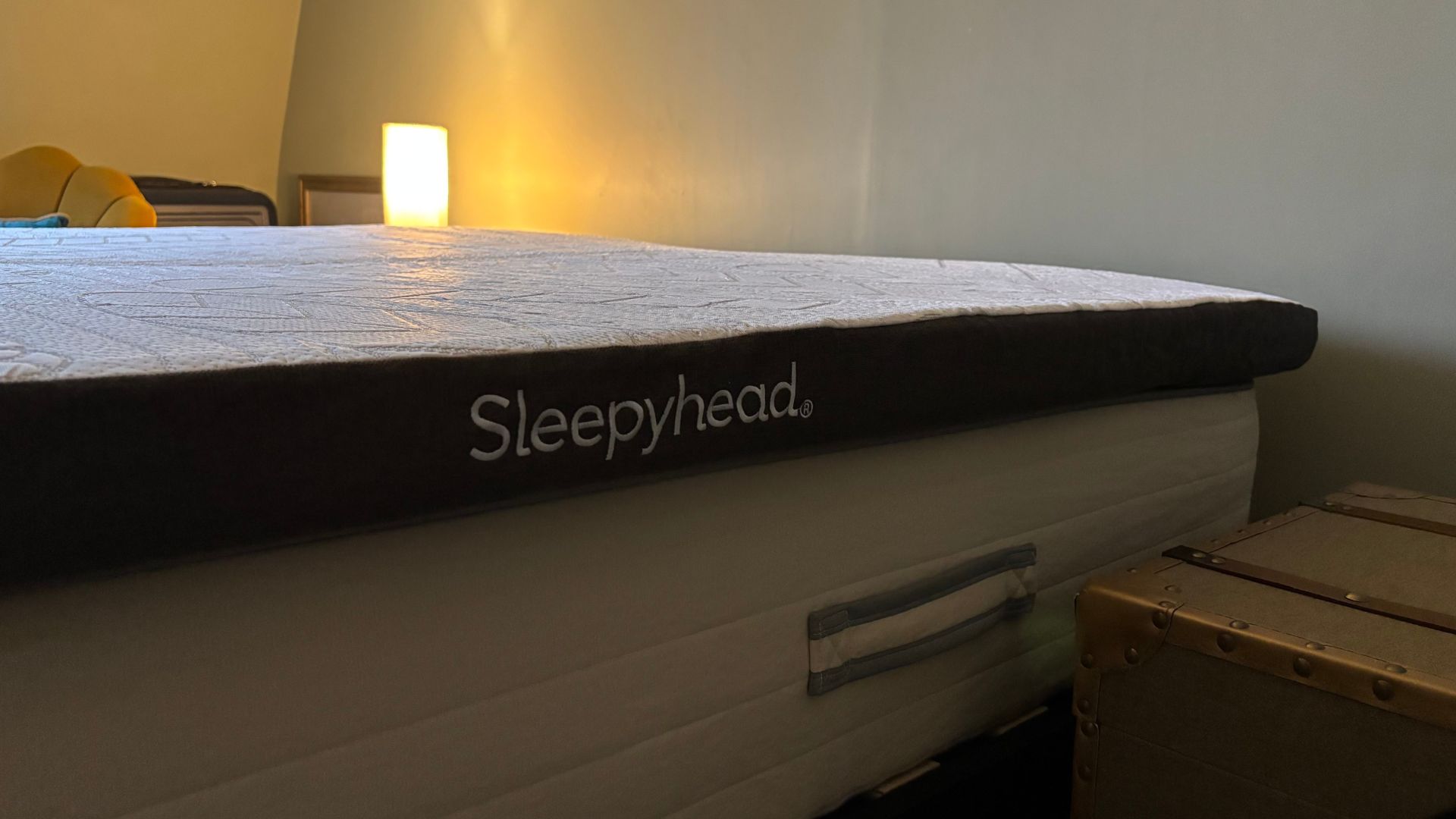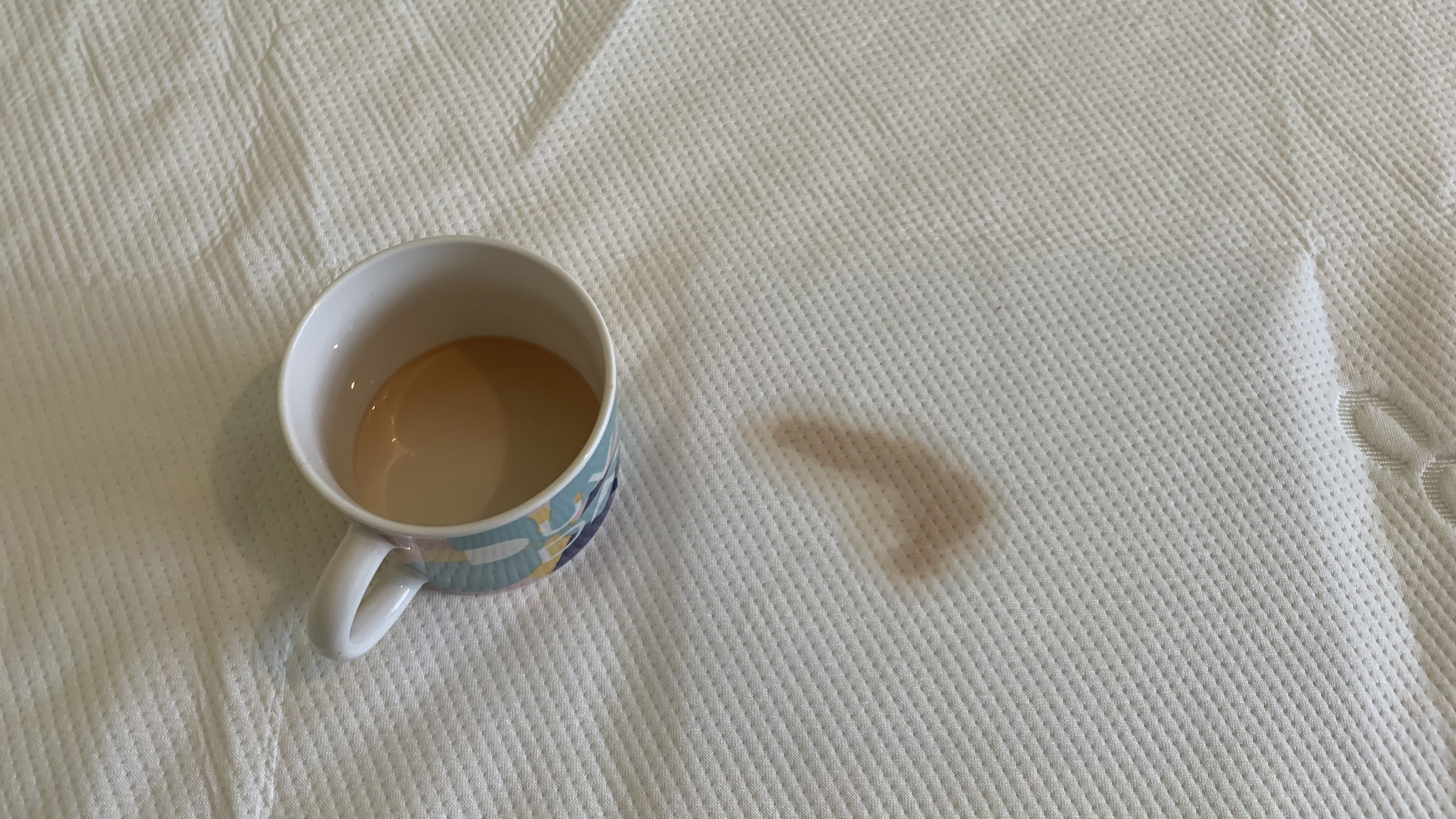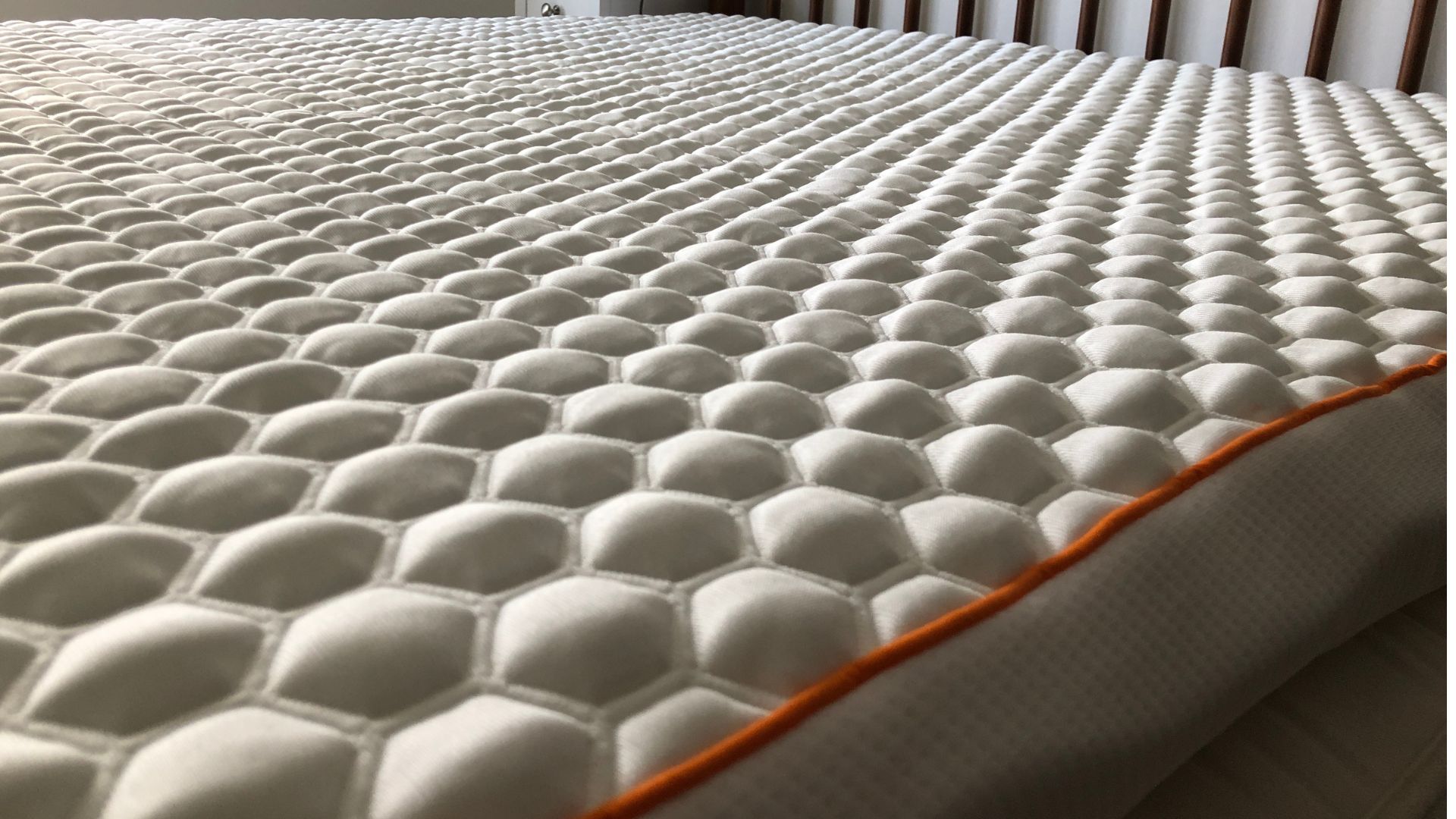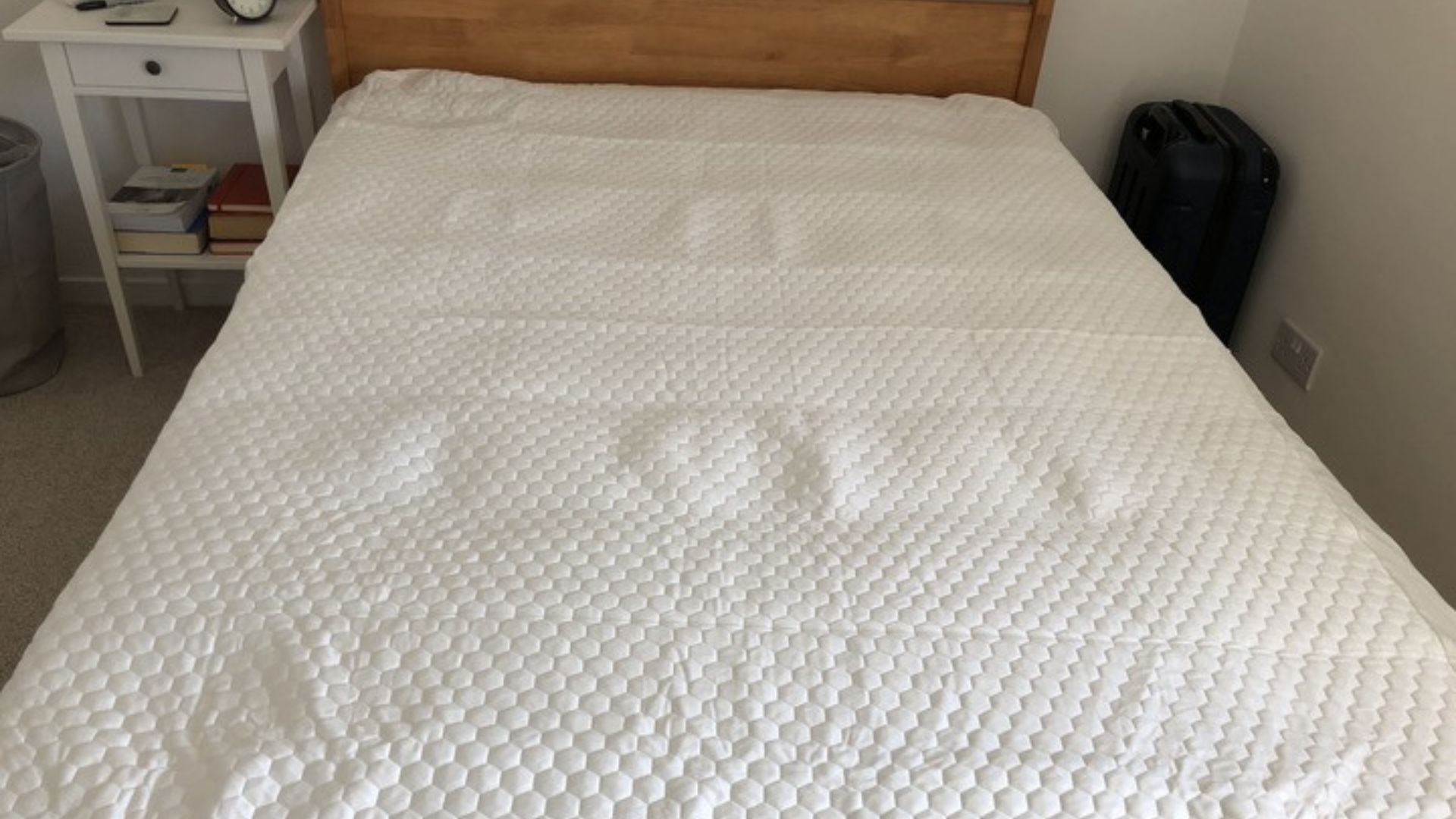Mattress protector vs mattress topper: Which one do you need?
We explain the key differences between mattress protectors vs bed toppers

When it comes to a mattress protector vs mattress topper, it’s easy to confuse the two. In a nutshell, a protector is a thin layer that safeguards your bed against sweat, allergens, spillages and bugs. A bed topper is a thicker slab of memory foam or latex that can instantly alter the feel of your mattress, making it softer or firmer to suit your sleep.
If you have recently bought the best mattress for your sleep and budget, both the best mattress toppers and best mattress protectors can add extra comfort and protection — but in different ways.
Here go through some of the key differences between a mattress protector vs mattress topper, looking at price, function, design and comfort, as well as which one is the most suitable for your needs.
Mattress protector vs mattress topper: What is a bed topper?
- A mattress topper is usually 2-4” thick
- They can significantly alter the feel of an existing mattress
- They are usually spot-clean only, but some have washable covers

Bed toppers are a fast and affordable way to upgrade your existing mattress. So if yours is currently too firm, you might need the extra pressure relief from a thick memory foam or feather option. If you sleep hot yet don’t have the budget for one of the best cooling mattresses, a cooling topper will help regulate your in-bed temperature.
if you're wondering how thick a mattress topper should be, ideally it should be 2” to 4" thick. They are usually made with the same materials found in different mattresses in a box, such as memory foam or latex. Toppers rest on top of your mattress, with some having non-slip surfaces or elasticated straps to help keep it in place beneath you.
Using a good quality topper can extend the life of your mattress by a few years. However, they should not be used on aging or sagging mattresses, as they still need a decent foundation to help give your body the support it needs while you’re sleeping. If your current bed has seen better days, then there is no substitute for a brand-new mattress.
But if your existing bed is still in good condition, but you need a firmer surface to support your spine, then there are many foam mattress toppers that provide excellent support, while extra cushioning options deliver pressure relief for the knees, hips and shoulders.
Get instant access to breaking news, the hottest reviews, great deals and helpful tips.
If you're in the market for a mattress topper but unsure of what kind you need, read our ultimate guide on how to choose a mattress topper.
Mattress protector vs mattress topper: What is a mattress cover?
- A mattress protector safeguards against spills, dirt and allergens
- Most can be machine washed and dried
- They will not change the physical comfort of your bed

Mattress covers (protectors) are designed with fabric that is usually either waterproof or water-resistant. They are compatible with most beds and are vital if you want to keep your mattress in good condition for as long as possible.
In essence, they ensure you’re sleeping on a fresh, hypoallergenic surface - and one that’s often sweat-wicking. These thin yet hard-working fabric layers are fairly inexpensive, often starting from as little as $10. Regardless of how much you pay or how padded it is, a mattress protector will not alter the physical feel of your bed. So if you’re looking for extra support, cooling or softness, then you should pick a mattress topper instead.
Protectors can be used on all manner of beds, including hybrid and memory foam mattresses. It’s worth checking the depth of your mattress before you buy a mattress protector to make sure it will fit. Most use simple elasticated straps, or attach in the same way a fitted sheet would.
Mattress protector vs mattress topper: Differences
- Protectors provides hygiene; toppers provides comfort
- Protectors are thinner and are machine washable
- Toppers are thicker and normally spot-clean only

A mattress protector is essential, while a topper is optional. In other words, no matter what, you should use a protector to keep your bed in good condition. This is especially true if you have recently bought a new mattress, as you could risk voiding the warranty or blowing the terms of the trial period if you don’t keep it in good condition. Other key differences include the following...
Protectors fit over a mattress to create a barrier against sweat, allergens and spilled liquids. And while mattress toppers also provide protection, they come with the extra function of adding firmness, softness or cooling, to radically alter the feel of your bed. However, if you sleep hot, some mattress covers are made with cooling fabric.
Mattress protectors are thinner and are made from bedding fabrics such as cotton or polyester, with added waterproofing to prevent liquid seeping through. Bed toppers are typically made using the same foams as you'd find in a mattress, including memory or gel foam, in order to provide the added support needed to align or cushion the body. They are placed on top of your bed, while protectors offer a more snug fit with elasticated straps or fabric sides that pull down just like a fitted sheet.
While it's easy to clean a mattress protector, as they can often often be washed in the machine, the process of how to clean a mattress topper (and how to clean a foam mattress topper) is typically more involved. They can't usually be thrown into a washing machine, although some toppers do come with removable washable covers.
Mattress protector vs mattress topper: Prices and key brands
- Toppers are more expensive than protectors
- Some toppers cost as much as a mid-range mattress
- Mattress protectors start from as little as $10

No matter your budget, there will be something within your price range, with the difference being in the quality, feel and performance. Mattress covers start at around $10 and are easy to pick up from Amazon, or you can look online to see what the likes of Casper, Nectar, Saatva or others have to offer.
Options from the bigger brands are often made with higher-quality materials and are designed to last longer, providing better resistance against wear and tear, and repeated washing, for years to come. This means you get better value for your money, even though you’re shelling out more to begin with.
It’s the same story for mattress toppers, which typically start from $50 on major retail sites like Walmart, Target and Amazon, with big-brand versions (think Tempur-Pedic or Saatva) running into the hundreds. If yours comes with extra features, such as rustle-free fabric, cooling tech or certified organic materials, as found in the best organic mattresses, then you should expect to pay extra.
Most mattress manufacturers offer risk-free trial periods, and some offer the same for their toppers, although this is far less common for protectors. There is usually a warranty, and free shipping too, though some brands and retailers ask that you spend a minimum amount to qualify for free shipping.
How much you spend is entirely up to you. If you are looking for something for occasional use for a guest bed, then a budget version is usually fine. But if you are looking for something robust that will cope with daily use, then it’s always worth spending a little extra, as it will be better value for your money in the long run.
Mattress protector vs mattress topper: Materials and design
- Mattress toppers are made from latex, memory foam and other materials
- Mattress protectors are normally made with a water-resistant fabric
- You can buy cooling and organic versions of both

Both products are designed to fit neatly according to your bed size. Protectors have a snug fit and attach securely with elasticated straps or in the same way as a fitted sheet, to keep them from shifting around.
Toppers usually sit on top of the mattress with no attachments, although some do have straps. If you’re worried about it slipping and sliding around, look for a mattress topper that has anti-slip coating. Or simply place a fitted sheet over the top to hold it in place.
The materials used to make each product varies. Most mattress protectors are made from fabrics such as organic cotton, bamboo-derived viscose or polyester, and have added waterproofing, and sometimes a thin layer of padding on top to add a little comfort. You can also get cooling mattress protectors made from heat-dissipating fabric, such as the GlacioTex one we tested in the Brooklyn Bedding Luxury Cooling Mattress Protector review.
Most bed toppers tend to use the same materials as mattresses, such as memory foam or latex, with many also boasting the same cooling tech such as graphite or gel-infused foam. You can also get bamboo mattress toppers, which have natural temperature regulation.
Mattress protector vs mattress topper: Which one should you buy?
Both protectors and toppers will keep your mattress in good condition for longer, whether it’s adding an extra layer of protection against wear and tear, sweat, urine and accidental spills.
However, if you are looking to transform the feel of your existing bed then a mattress topper is the only real choice, adding extra pressure relief, cooling or support depending on what you need. They come in a variety of sizes, prices and thicknesses, and can be used to make a hard bed softer, a soft bed firmer, and a hot bed a little cooler.
That said, a topper will never outperform a mattress protector at keeping your bed fresh and free from allergens. These fabric covers are also much easier to care for and can be washed much more frequently, making them a great choice for boosting your in-bed hygiene.
Read more:
- The best pillows for sleeping
- Sleep calmly with the best weighted blankets
- Get cozy with a snug comforter
- The biggest mattress sales from leading brands
- Should you flip your mattress topper?
Grace is an experienced sleep writer and mattress reviewer who also contributes to our sister site TechRadar, among other Future plc brands. She's a big fan of organic sleep products and has recently invested in a wool mattress topper that she quite happily describes as "life-changing." (Hey, we're serious about our sleep products). When she isn't testing mattresses or writing about sleep, Grace enjoys reading and creative writing, and incorporates meditation and yoga into her wellness routine.
You must confirm your public display name before commenting
Please logout and then login again, you will then be prompted to enter your display name.

